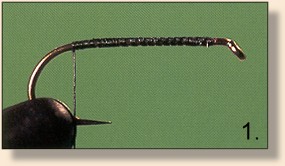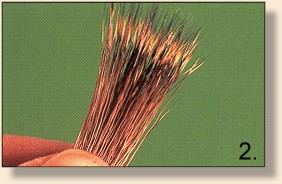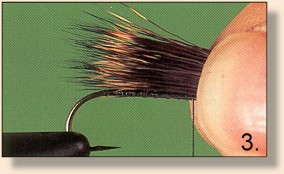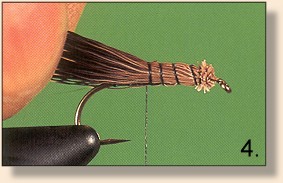
 |
|
Tom Thumb
|
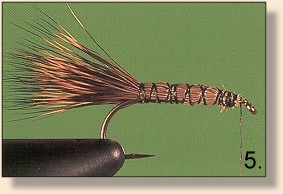 Step 5. Once the tail is in place return the tying thread to the head of the fly. The finished tail should have a gathered appearance but should not spin about the hook shank.
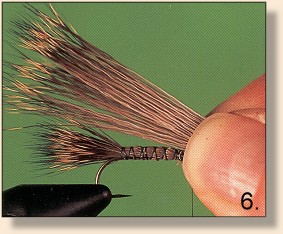 Step 6. Prepare and stack a second clump of deer hair using the same guildelines as for the tail. This second clump of hair forms the shellback and wing. The second stack will be tied in the same manner as the tail so an extra shank length of hair will be needed. The length of the second stack of dder hair should be three shank lengths from butt to tip. Trim the butts once sure of the measurement as was done with the tail.
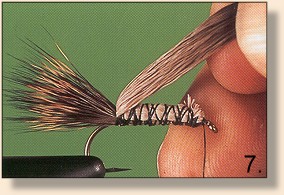 Step 7. Using your left thumb and forefinger to control the deer hair, bind down the deer hair along the hook shank. Do not let go of the deer hair until it is completely tied in. If let go, the second clump of deer hair will mix with the tail making it difficult to separate the two. Just prior to letting go of the deer hair , rock the deer hair tips forward over the eye.
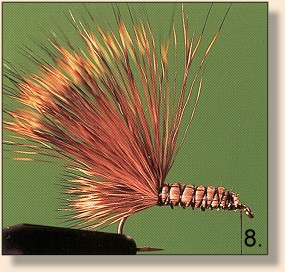 Step 8. Racking the hair forward puts a set into the deer hair separating it from the tail. Make sure the second stack of hair is secure. It should not spin. It is okay to place liberal amounts of thread along the shank for added security. There should be no visible thread wraps separating the tail from shellback as the tail should appear to grow out of the shellback.
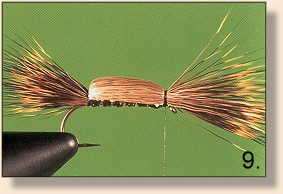 Step 9. Stroke the second clump of deer hair together and pull it over the top of the fly to form the shellback. Hold the tips in place with the right hand and tie down the tips using the left hand, again for right-handed tiers. Tying in and securing the deer-hair tail, shellback and wing in this manner helps provide floatation.
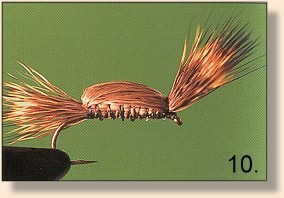 Step 10. Grab the tips of the deer hair and lift them up to expose the hook eye. Stand the wing upright using the tying thread while forming a head at the same time. Whip-finish and apply head cement. Fan the wings like a Comparadun. I like my Tom Thumbs to have an upright and full-fanned wing for optimum visibility, while others may prefer a lower-profile wing. ~ Philip Rowley Credits: This fly is an excerpt from Fly Patterns for Stillwaters, published by Frank Amato Publications
|
|
|
